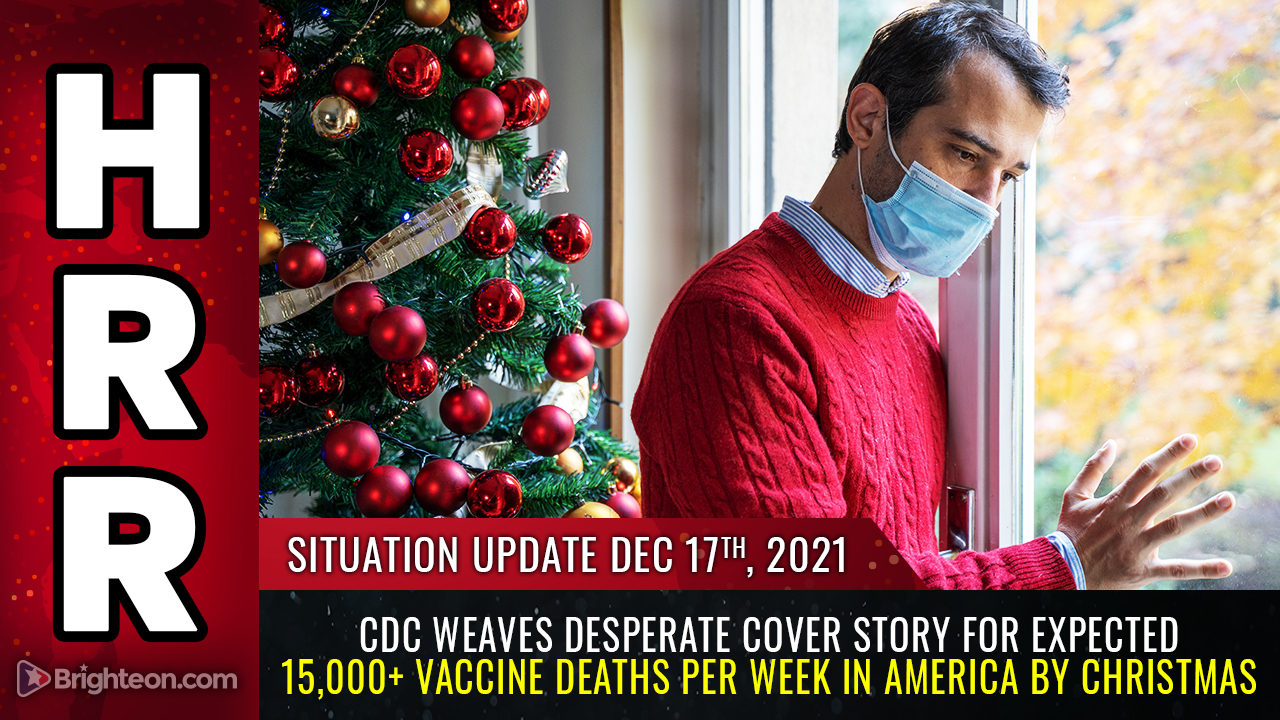Study finds ALMOST HALF of coronavirus patients leave hospitals in worse shape
06/04/2021 / By Ramon Tomey

Patients who contract the Wuhan coronavirus (COVID-19) are usually sent to hospitals to receive medical treatment. However, a new study has found that almost half of COVID-19 patients leave hospitals in worse condition than when they entered. To make things worse, they also found that one in five COVID-19 patients may no longer be able to live independently.
Michigan Medicine researchers looked at the health data of nearly 300 adults hospitalized for COVID-19 between March and April 2020. Information analyzed by the researchers included discharge data, therapy needs for each patient and any requirements for special medical equipment or services after leaving the hospital.
The research team published their study on April 30 of this year in PM&R. According to their findings, 45 percent of patients who survived COVID-19 experienced functional decline affecting their discharge. Of that 45 percent, 26.7 percent experienced difficulty swallowing at the time of their discharge.
The team also found that nearly 20 percent of COVID-19 survivors were discharged to a different location other than their home – such as an assisted living facility. Almost 68 percent of patients who recovered needed durable medical equipment. Furthermore, 80.6 percent of people who recovered from COVID-19 were referred for additional therapy at discharge.
Lead study author Dr. Alecia Daunter said: “Rehabilitation needs were … really common for these patients. They survived, but … left the hospital in worse physical condition than they started. If they needed outpatient therapy or are now walking with a cane, something happened that impacted their discharge plan.”

The physiatrist added that COVID-19 survivors unable to live independently “may have needed to move to a sub-acute facility or … with a family member” instead of going home. “This has a massive impact on patients and their families – [both] emotionally and physically,” Daunter said.
Findings shine light on long-term effects of COVID-19
Daunter and her team noted that the data they analyzed came from the first two months of the pandemic. They remarked that during that time, doctors did not have a full picture of COVID-19’s long-term effects and hospitals were focused on freeing up hospital beds.
“Physicians and others in the health care system were working appropriately to discharge patients. They needed to keep patients safe while maximizing available beds and minimizing [staff] exposure,” Daunter said, adding that these contributed to physiatrists assessing many COVID-19 patients for any rehabilitation needs.
According to the researchers, COVID-19 can systematically damage several organs in the body. This results in neurological and musculoskeletal impairments in patients – months after the infection has passed. Describing the COVID-19 survivors suffering from these, Daunter said: “Some of these people were working and many were living independently. To lose that level of function is meaningful, [and we] want to make sure we’re addressing those needs.”
Study co-author Dr. Edward Claflin said that more and more people are now living with the long-term side effects of COVID-19. He added that these long-term disorders can no longer be simply ignored given the magnitude of the current public health crisis. “These results help to highlight the true impact of the COVID-19 disease on our patients. They fill in that gap in knowledge about how patients … recover and what kind of rehabilitation needs they have,” Claflin said.
Meanwhile, clinical psychologist and study co-author Anna Kratz described the findings as “just the tip of the iceberg” when it comes to COVID-19’s impact on functioning. “We know from decades of rehabilitation work that even subtle changes in functioning can derail a person’s life trajectory,” she said.
Survivors accounts illustrate COVID-19’s long-term impact best
But when it comes to describing the actual long-term effects of COVID-19, first-hand stories from survivors themselves sum it up best. Back in April of last year, the New York Post interviewed a number of people who contracted COVID-19 and recovered – yet still suffer from long-term side effects.
Actor and singer Danny Burstein built strong lungs through 40 years of singing and dancing on stage. However, things changed for the six-time Tony nominee after he contracted COVID-19. Going down two flights of stairs to take the garbage has him completely winded.
“Sometimes, I’m having conversations and I can’t get enough air – that’s the toughest part. For the most part, the symptoms are gone but what remains is the damage that was done to my lungs,” Burstein told the Post.
Shaun Khubchandani said the simple act of breathing made his lungs feel “on fire” after he fell ill with COVID-19. He described his experience: “It felt like my lungs were on fire. I couldn’t take a deep breath. That’s when I started getting worried.” Khubchandani added that the disease “tricked” him that he was feeling better – something he called a false alarm.
“I had a couple of false alarms where I felt like I’d totally recovered, and then the next day a fever came back,” he said.
Visit Pandemic.news for more on the long-term effects of COVID-19.
Sources include:
Tagged Under: coronavirus infection, covid-19 pandemic, functional decline, hospital discharge, long-haul impact, long-term effects, Michigan Medicine, physical rehabilitation, physical therapy, rehab medicine, Wuhan coronavirus




















